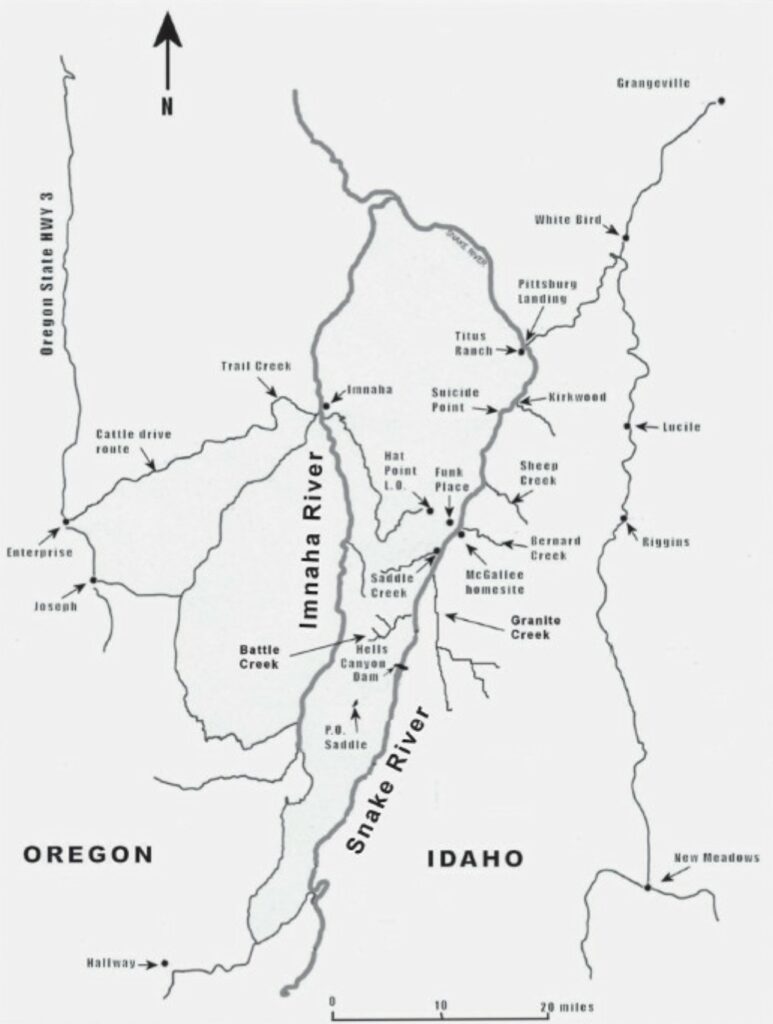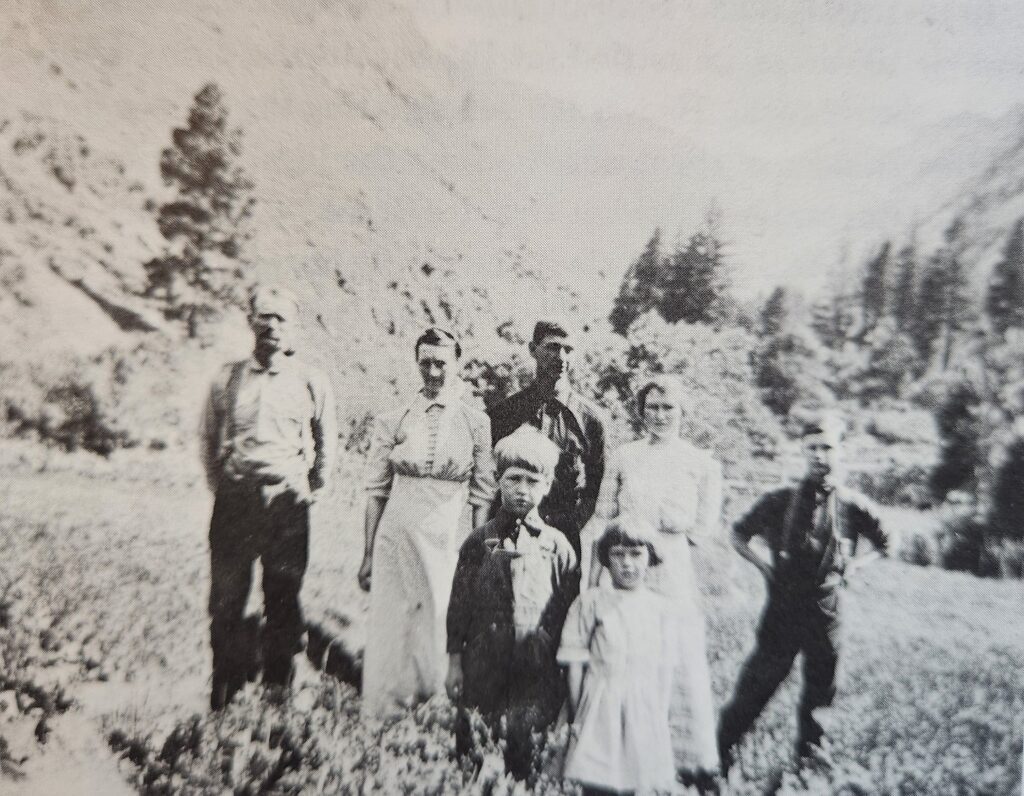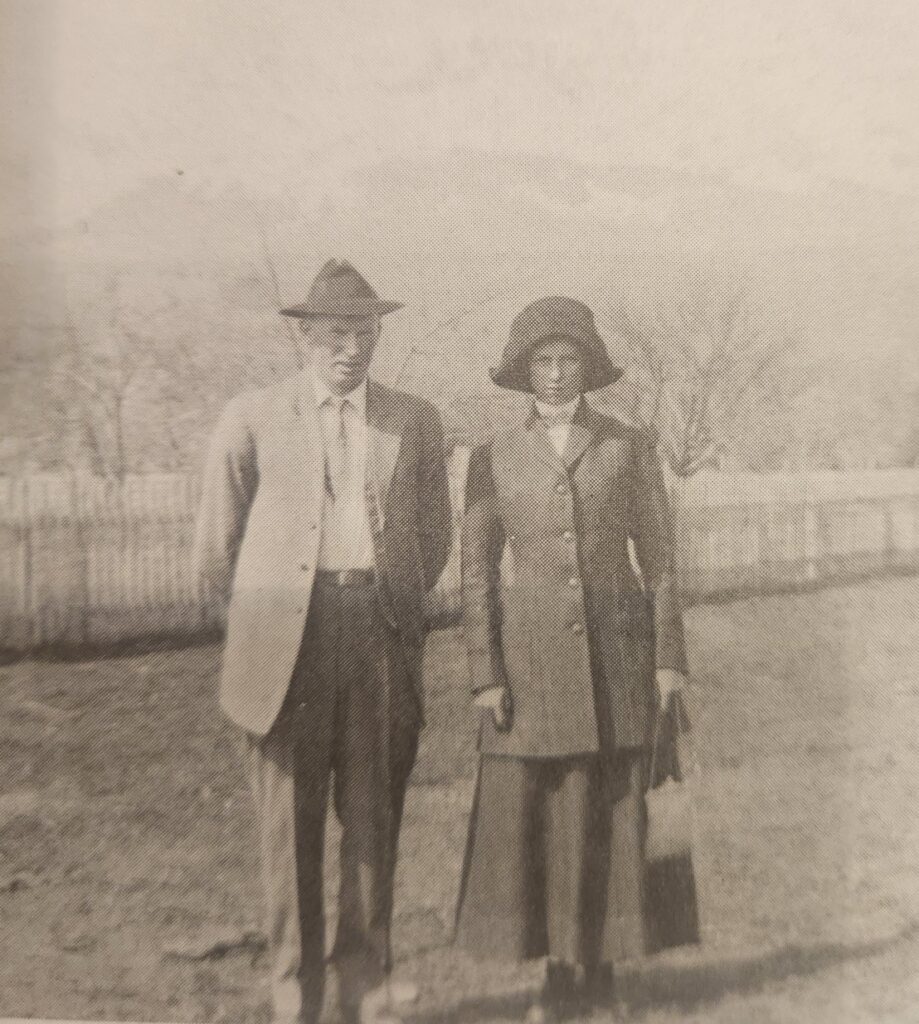In a previous article I gave you An Unsolved Mystery in the Imnaha. In that story I presented a murder mystery, and speculated that, even after all this time, there may exist stories passed down through family which could help solve the mystery. And I challenged you to use your research skills and try to find those stories.
Now, I encourage you to reread that article, and then come back here and to see what I discovered.

I have often written about the amazing connections between family and historical events of the 1800’s. My first journey to the Imnaha arose when I researched the Shields families. In Two Families, One Common Ancestor, Two Hundred Miles Apart, I looked at the Shields family of Long Creek, Oregon, who were within my family tree. I also saw that there were Shields in the Imnaha. I felt drawn to the idea that they must be connected. It seemed that if two families with the same surname existed in roughly the same place (Oregon Territory) at the same time (late 1800’s), they must be related. And indeed, it turned out to be true.

The Imnaha River of Northeastern Oregon is surrounded by some of the most spectacular and rugged landscapes in the Pacific Northwest. The Imnaha is fed by snowmelt from the Eagle Cap Wilderness in the Wallowa Mountains. At times roads cling to sheer cliffs, winds by deep gorges, travels through tall forests or rolling hills of bunchgrass and sage. The eastern edge of Oregon falls away into Hells Canyon to the Snake River, the deepest river gorge in North America, some 2000′ deeper than the Grand Canyon. To this day the Imnaha region remains remote, many places still accessed only with great difficulty, a wild landscape caught in a time capsule of old western flavors.
My journey into the Imnaha opened connections I could not have imagined, a lifestyle that has been nearly forgotten, family I did not know I had, and untold stories. But still today there are families moving cattle in those hills. They remember the stories of their ancestors.

For many of us, a life of dogging cattle, or herding in the rugged mountains above Hells Canyon, is unimaginable. Even more unimaginable is the life our early settlers of the Canyon endured. The isolation, (where the nearest neighbor might be 20 miles away), the extreme weather, the impossibly rugged terrain, and the complete reliance upon their own wits and strength to raise a family, is so distant from the convenience of the life we live today.

There is probably no finer chronicle of life in those times than My Heaven in Hells Canyon – Growing Up in Snake River, by Violet Wilson Shirley (available HERE). Violet was Martin’s granddaughter, and in her own words she speaks of the importance of writing family stories. As she told her daughter, “When my life is over and I’m no longer around, I realize how one cannot recall the things they’re told; just as I regret that I didn’t listen closer to my grandmother, whose parents came across the plains on the Oregon Trail.“
And so, we return to the story and mystery of her grandfather’s murder. In my first post of this story the investigators decided Mr. Hibbs had been shot three times, once in the head and twice in the body. A pistol was found in the ashes near the body of an unknown man in the house, and it held two empty shells. Half a dozen rifles and shot guns were found in the ruins, apparently all of them having belonged to Mr. Hibbs.
These disclosures threw no light on the mystery and all the jury could do was to return a verdict of murder at the hands of an unknown person in the case of Mr. Hibbs, while the cause of the death of the other man could not be stated.
Publishing that story awakened memories of family members still working those hills today. It was suggested I read “Snake River of Hells Canyon” by Johnn Carrey, Cort Conley & Ace Barton (available HERE), and therein, another theory about the murder arose.
A Second & Third Theory

Joe Anderson and another miner had a camp a few miles upstream from the Hibbs cabin. The two men had been described as a bit odd and “paranoid,” and though the partners camped together, Joe felt that someone was “out to get him.” Martin had asked Joe to take care of the animals and watering of fruit trees at his cabin while he was gone.
The story in Snake River of Hells Canyon describes a scenario where Joe was at the cabin, and hearing a noise and thinking his partner was after him, stepped out of the cabin and shot. Seeing he’d killed Martin, he went into the cabin, and shot himself. The bullet went through his head, hit the stovepipe, and started the fire that burned him and the cabin.
The book offered a third variation as well, and this version indeed had Joe’s partner lurking outside where cigarette butts were found behind a tree. The partner shot Martin when he arrived home, thinking it was Joe, then went into the cabin and shot Joe. A search of their camp a few days later found no trace of the man, his absence confirming his misdeed, and Joe was buried there on the hillside.
The Surprising Theory

Then, there is the final version to explain Martin’s murder, the story that was whispered through the hillsides above the canyon. In Snake River of Hells Canyon, one of the authors, Ace Barton, Lenora’s son and Martin’s grandson, wrote that there were “a lot of wild speculations.” Indeed, those “speculations,” about his own mother, did not sit well with her children, as one might expect.
For the view of most family members was that Lenora had killed her father, though it was never investigated or proven. After Lenora’s husband Ralph passed away some family members described her as “becoming increasingly hard to handle.” She had been estranged from her father for some time, and very rarely visited him after her husband Ralph passed away.

While the authorities speculated on the events of the murders(s), to the family Lenora voiced other claims. She said her reason for going to Granite Creek was to pick fruit. The family felt this seemed a very far-fetched reason. Why would she leave her abundant orchards on her Imnaha ranch to ride for several days to pick fruit at her estranged fathers ranch, during the exact time he was to be gone for the forest service meeting, and her brother was gone visiting his girlfriend in Pullman? The entire family, except for Lenora’s two children Hazel and Ace, firmly believed Lenora to be the murderer.
In My Heaven in Hells Canyon, Violet speaks passionately, and with the greatest fondness, about her life and memories of growing up in the Canyon. What goes unsaid, except obliquely, is that disputes between neighbors, and between family members, existed as they often do, both yesterday and today. There is no idyllic life, for human interactions often include disputes, dysfunction, misunderstandings, jealousy, and resentments. In the isolation of those remote mountains there was seldom recourse to conflict, accept however people strove to find resolution by their own means. More often than not, the adage, “What happens in them mountains, stays in them mountains” applied. And life rolled on.
New Connections
The mystery of Martin Hibbs murder is not to be resolved. Too much time has gone by, too many ancestors are lost to us. Stories linger, get twisted and turned, morph into versions that may no longer have basis. And still, I gather so much from trying to understand, untangle, fathom the life of my ancestors. In the quest to understand Martin Hibb’s murder I have learned so much more about the life of those early pioneers. I have met people, who remember people, who remember those old stories, however twisted the stories become, and out of it all I find more family and history.
In this “mystery” of Martin’s murder I found clues to other people, names that were familiar, and references to family members I did not know existed. I started this quest from a simple line I’d read when I first encountered the Hibbs story, the line that mentioned Pete Wilson, Charles Marks, Cleve Loyd, Dick Fisk and Casey Denny being in the party that transported the body of Martin Hibbs out of the Canyon by packhorse. Wilson, Marks, and Fisk. Names that were already in my family lineage, yet new to me.

And so it came to pass, that while the murderer of Martin Hibbs will “stay in them hills,” I will have new stories to tell. I didn’t discover the mystery of his murderer, but instead discovered that the Hibbs, Wilsons, Marks, and Fisk’s of the story would all become folded into my own family tree and become a part of my own story.
From the Shields of Long Creek to the Shields of the Imnaha, then to the Strobel’s and Manwaring’s carrying Amy’s body across the frozen Snake, and on to Hibb’s family saga and all the families of the Hells Canyon. The stories I thought I would tell for others became my own. And that remarkable connectedness between family and history revealed even more of the past, and more stories that soon will be told.



Jacob
Oh how cool it is to know Jordan and Tio made there mark in those mountains.
Mgoddard
Jordan has helped me with stories so much I just had to slip him and Tio in there!!